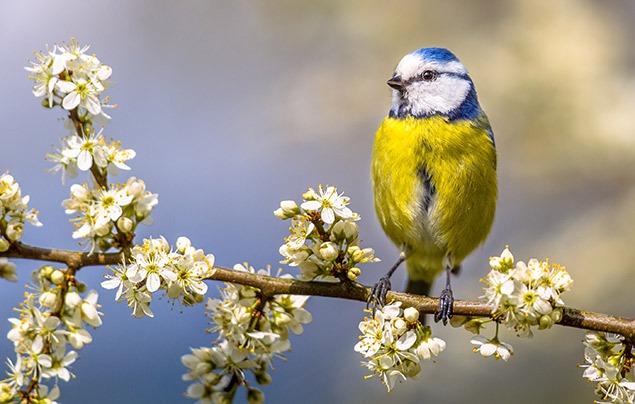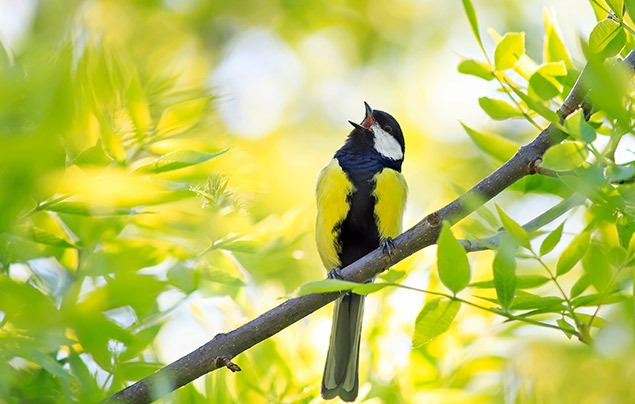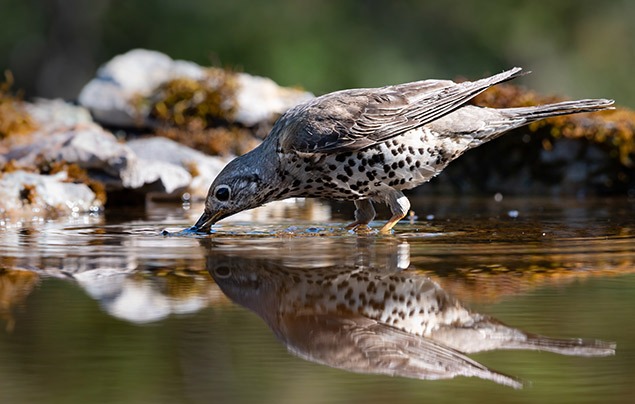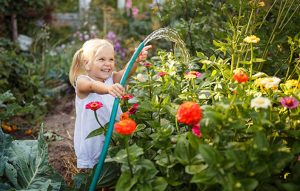How to attract birds to your garden (and keep happy, too!)
Grow your family’s circle of feathered friends with these top tips…
Here’s something worth tweeting about: being around more birds can boost your family’s happiness. A German study of more than 26,000 Europeans found that the cheeriest folks lived near natural areas with a wider diversity of bird species.
Turns out simply seeing and hearing a variety of feathered friends is enough to boost your family’s spirits – but the mood lifter isn’t from the birds alone, researchers say. Instead, it’s the rich biodiversity, or variety of life, found in places birds call home.
Here’s a quick look at why nature makes kids happy, as well as some tips for how to attract birds to your garden.
Why nature contributes to happiness
“Many studies have shown that spending time outside in nature, or even viewing it from a window, can benefit mood and cognitive function, as well as reduce stress and anxiety,” says Greg Bratman, assistant professor of nature, health, and recreation at the University of Washington School of Environmental and Forest Sciences.
For instance, this “nature pill” study found that a 20-minute nature break can significantly reduce levels of the stress hormone cortisol. Other studies, Bratman says, have shown similarly positive impacts on heart rate, blood pressure, and other aspects of the autonomic nervous system.
That’s why Bratman, who led a review of research linking the environment and well-being, encourages families to make nature part of their daily lives.
“Trips to natural areas can contribute to well-being,” he says. “But regular instances of experiences with nearby nature can have effects as well.”
When kids can’t get out into nature, why not try bringing it indoors? Learning about the wildlife around them can enrich outdoor experiences, and liven up a dull afternoon in dark winter or on rainy days.
Inspire their minds with a subscription to National Geographic Kids magazine. Each issue is packed full of interesting articles that will entertain and educate, alongside extraordinary photography that will show them the world’s wonders. What could be more joyful?
The biodiversity-bird connection
But why are birds so important to nature’s biodiversity—and therefore your family’s potential happiness? For one thing, birds are an indicator species, so they basically function as a “check engine light” for biodiversity. When something is out of whack in nature, birds let us know—often by disappearing—because they need a healthy environment to survive.
Of course, birds aren’t the only indicator, but since they’re found almost everywhere in the world and are easy to study, their presence—or absence—is a good way to measure the variety of life that research shows can boost mood.
So, would biodiversity without birds have the same effect? For instance, could seeing lots of poop-eating dung beetles —an indicator species in some parts of the world—increase happiness? Or is there something about birds that naturally sparks joy?
“Scientists are still learning”, says Clint Francis, a Cal Poly biology professor who supervised a recent study showing that hearing bird songs while hiking can hike up our sense of well-being. The authors suggest this is both due to the sounds themselves and the perception that more birds mean greater biodiversity.
The brilliance of birdsong
Francis says that one reason birds might make us feel better could be related to how our ancestors used birdsong and chatter as a cue for danger.
“I think many people can relate to the experience of walking through a forest—birds are singing and chattering—then suddenly everything goes quiet,” he explains. “Our subconscious, and that of many animals, uses passive listening as a surveillance mechanism. Thus, sudden quiet is immediately brought to our attention for possible danger.”
Hearing birds might also produce positive effects because it reminds us of previous happy experiences in nature – whether it’s a quick stroll or a forest-bathing adventure. That’s because the part of the brain that processes memory —the temporal lobe—also processes sensory information, meaning that a specific sight, sound, smell, taste, or touch could become part of a memory. “Birdsong in particular might signal the arrival of nice weather and that harsh winter conditions are behind us,” Francis adds.
Although hearing more bird sounds is good for people, Francis says human-made noise is bad for birds. Based on his research and other studies, unwanted sounds—like traffic and gas-powered leaf blowers—tend to keep birds away. Plus, more background noise makes it hard to hear the birds that are already there.
“This is likely one reason why people reported seeing and hearing more birds during the COVID-19 lockdown,” he explains.
So, turning down the noise even a little bit in your garden (for instance, by using battery-powered lawn equipment or planting tall hedges as natural sound barriers) will increase the number and variety of birds your family can see—and improve your ability to hear them, too!
How to attract birds to your garden
Plant a native smorgas-bird.
Native plants like sunflowers, hawthorn and holly are natural feeders that provide the variety of seeds, berries, nuts, and insects birds eat. You can also use bird feeders filled with seeds and nuts, or even stash some of your leftovers in the garden for birds.
Add water.
Birds need water for drinking and bathing. A simple birdbath or a one- to -three-inch-deep dish works well, and you can put it in an observation area where kids can record the bird species they see in a journal or in a family eBird account for citizen science purposes.
Create hideouts.
Densely planted areas give birds a place to escape predators and bad weather, while roosting boxes (similar to birdhouses but with the hole at the bottom) are great for cold nights.
Make room for baby.
To reproduce and raise their young, birds need places to build nests. Help them by planting native trees and shrubs and protecting existing ones. For a fun activity after leaves disappear in the autumn, take kids on a scavenger hunt to see where the birds built their nests.
Go natural.
Keep the habitat you created healthy for wildlife by avoiding insecticides and other potentially harmful products. And don’t forget to keep cats indoors so they don’t “go natural” and kill the birds!

















LEAVE A COMMENT
THANK YOU
Your comment will be checked and approved shortly.
WELL DONE,
YOUR COMMENT
HAS BEEN ADDED!
COMMENTS
CUSTOMIZE YOUR AVATAR